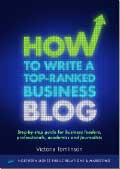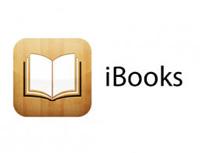The Woe Factor; Designing for Kindle
11 December 2013 By Northern Lights

Victoria and team contacted me a while back with regard to designing and producing a new eBook about writing skills and techniques for blogging. I thought this was a great subject for a book, as writing blog posts, scheduling their posting and getting a worthwhile social networking benefit from them is a quite neglected, but increasingly important, set of skills. Having a well maintained blog is now widely regarded as essential for most businesses, but many have failed miserably (and spectacularly) at blogging, often due to the obligations foisted upon folks already busy with their ‘real’ job. The truth is, of course, that for most of us these obligations are now part of that ‘real job’, like it or not. So I thought this book would be particularly well-received, especially given that it is in eBook form itself – the ideal medium for the message.
contacted me a while back with regard to designing and producing a new eBook about writing skills and techniques for blogging. I thought this was a great subject for a book, as writing blog posts, scheduling their posting and getting a worthwhile social networking benefit from them is a quite neglected, but increasingly important, set of skills. Having a well maintained blog is now widely regarded as essential for most businesses, but many have failed miserably (and spectacularly) at blogging, often due to the obligations foisted upon folks already busy with their ‘real’ job. The truth is, of course, that for most of us these obligations are now part of that ‘real job’, like it or not. So I thought this book would be particularly well-received, especially given that it is in eBook form itself – the ideal medium for the message.
If you’re a blogger, or just getting in to blogging, I’d recommend checking out Victoria’s new ebook, it contains plenty of case studies (with relevant screengrabs) and many great examples from successful blogs, guiding you to better results from your own blog. Great visual references for the reader, an ’interesting’ challenge for the designer!’
PDF vs eBook

adobe.com
Designing for PDF is now well established and relatively straightforward, however dedicated eBooks are anything but.
PDF documents have advantages of easy (and economical) production, they can look great and are readily distributable from most websites. PDF files can also be read by eBook readers, but the reading experience is more like scanning across a large image (and sometimes that’s exactly what it is) and is far less satisfactory than a properly formatted eBook specifically designed to take advantage of the devices’ capabilities.
So why bother trying to publish a Kindle eBook at all?

Courtesy of amazon.com
Amazon’s marketplace is the answer, of course. Good as your website may be it just won’t match the scale of Amazon’s traffic, then there’s the sales ecosystem they’ve built, with reader reviews, keen pricing (even free offers) and specialised reading devices dedicated to the store. With their relentless focus on sales Amazon pretty much is eBooks, the scale of their marketing is such that it usually negates the advantages of the easy PDF route.
Amazon’s Kindle store is obviously the first choice for self-publishing. Apple’s iBook store is also gaining in popularity, thanks to the insane sales of their various iDevices that come with the eBook reading app onboard, in particular the new retina screen iPad mini is competing strongly against the Kindle range.
Since we were aiming for a Kindle release first this post is mostly dealing with the journey of that particular version of the eBook.
‘This is my standard, and if you don’t like it… well, I have others.
(with apologies to the great Groucho Marx)
In the world of eBooks ‘standard’ is somewhat misleading as a term of reference. The truth is that there are several standards, often competing and often (bizarrely) used together during the production of an eBook. For example: this eBook started life in the InDesign app (used to create the original PDF layout), then exported to ePub, from where it was disassembled into component html files, edited, repackaged to ePub – and finally converted to .mobi format for Kindle. At its core an ePub file is actually a collection of xml code ‘pages’, with some CSS and other management documents – in effect a website.

Epub is the standard format for a lot of eBook readers, but not Amazon’s Kindle device, which is designed to read .azw, .mobi, PDF, and text files.
The default format for Apple’s iPad is ‘iBook’(a modified version of ePub) with the ability to also read ePub, PDF and text files. Additional formatting beyond standard ePub is used to apply DRM (Digital Rights Management), restricting access to the eBook and allowing the vendor to control distribution, hence ’Kindle’ and ‘iBook’ formats.
The proprietary formatting required for specific vendors’ DRM makes for a difficult and frustrating conversion process from the original document.
Off-the-shelf vs Custom Tailored conversion
When considering self-publishing there are many online services offering to convert your (typically) Word file into Kindle, Nook, iBooks etc. These services are efficient, usually low-cost and have the attraction of just handing over all the difficult work of converting and testing the source text into the various mobile reader formats. If your eBook is to be mainly plain text, such as a novel, then these services may be worth looking into. But if you have any significant amount of visual content you’ll soon find that the auto-conversion processes of some of these services can generate some weird and wonderful eBook results – and not in a good way!
The problem is, of course, that the high degree of automation means that you have no control over the processing and final output. You ‘pays your money ~ you takes your chances’.
Also worth noting that although the Word application is still popular for many writers (though less so with the growing market of specialised writing apps) it’s design capabilities fare poorly when compared to professional apps like Adobe’s InDesign.
InDesign is an Industry standard for most professional designers and its what I used to create this eBook.
InDesign truly is an amazing design app and offers almost total control over the design and look of a publication. But the design is only the starting point for eBook production, with the real challenges yet to come in converting the format from traditional (fixed) print orientated layout to a ‘responsive layout’, capable of displaying correctly on an ever increasing number of digital reading platforms. From a production point of view it’s almost funny to refer to eBook formats as standard, even when designing for a single store such as Amazon Kindle.
Basically: if you have a lot of visual material in your eBook it will need to be presented with care and consideration, hence likely not created in Word, and probably requiring a professional designer, using InDesign.
So tailor-made was definitely the way to go in this case.
The Design

Isolating a clear concept for the cover is always my starting point for any design on an eBook project, after all this is how the prospective customer will first see your eBook and it will definitely influence the purchasing decision to a large degree. In this case we arrived at a typographic play on the title itself, visually pushing forward the ‘How’ and ‘Blog’ while featuring a play on results with the upward graph arrow. The faux-pixellated style is a nod to the tools of the contemporary writing trade.
In designing the interior pages there were considerable challenges to overcome as this particular eBook contained a lot of graphics and images, with significant impact on the production process. I knew the different formats of PDF and Kindle meant that the two versions of the eBook would not be an exact match regarding layout, typestyles etc., but I did want to have them as close as possible.
Trying to replicate a print layout in a responsive design is tricky indeed, many traditional design techniques simply don’t work when the user can be viewing on any one of several different devices and even rotating the screen itself, further changing the format.
It is reasonably straightforward to reproduce a print-like layout for a web page, but once again the peculiar bespoke formatting required for specific eBooks makes it extraordinarily difficult to rely on an image staying where it was placed in the design layout.
Oh, the fun I had!
The 1980?s called – and they want their apps back!
As if the processes of converting a document to an eBook weren’t difficult enough then we have the apps…
The state of apps used in production of eBooks is pretty barbaric at present, especially when compared to the mature production tools available for print, which is where most documents will start from. I used Amazon’s own ‘Kindle previewer’ app to do the final converting from ePub to Kindle format. It’s a confusing process, with the actual workings of it hidden from the user – and all performed via an interface that only a mother could love.
In the early days of Desktop Publishing (and not that long ago) there were times when we had to edit the Postscript code itself to get an occasionally difficult print job done. The same could be said for web design in its early days. Today the idea of having to actually edit code just to get a printer to work is laughable – and there are many ways to currently build a website without knowing any HTML code at all.
Doubtless similar maturity will come about for eBook publishing in time, in fact Apple already have an impressive bespoke app for their own iBooks format. If Apple can do this for their own eBook format it really puzzles me why Amazon don’t have a similar app to service their own (much larger) marketplace. I’d pay good money for an app like that right now – and I’m sure I’m not alone in that.
A business opportunity for some enterprising programmer perhaps?
Get me to the store on time!
Although the production tools feel like a blast from the past there’s nothing antiquated about Amazon’s approval and checkout system. Time was it could take a few days for a publication to become available on the store (the uploading FAQ states the book will be in store within 12 hours).
It’s also reassuring to know that the processing time from upload to ‘on sale’ is short, particularly when working towards a tight publishing deadline.
The Wrap
Despite the tortuous conversion processes, and the amount of time it takes to produce good results, there are still good reasons to opt for a proper eBook instead of a simple PDF, not least of which you will be offering your customers a much better reading experience for the eBook you wish them to buy.
I can’t help thinking though that eBooks have surely been around long enough now to support the development of professional quality authoring apps. Apple are definitely leading the way here with their already impressive (and free) iBooks Author app, but I’m puzzled that no such thing exists yet for the Kindle market.
Maybe I ought to add that to my Christmas list – and hope they check it twice!

